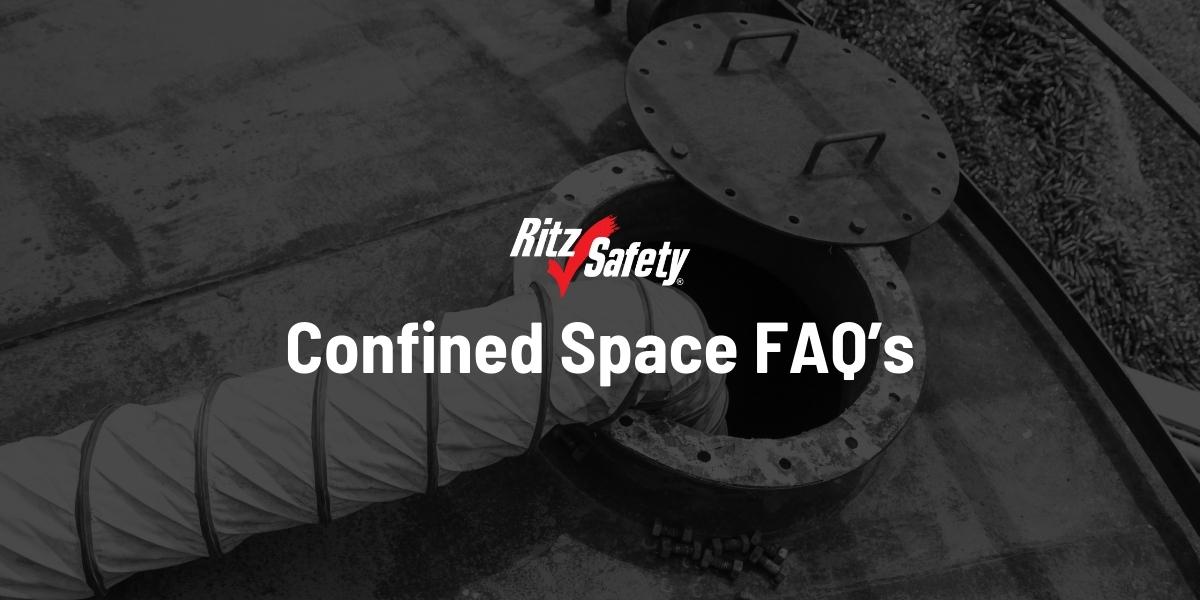
The Most Common Confined Space FAQs
What is confined space?
According to OSHA, a confined space is an area that meets the following criteria:
- Is large enough for an employee to enter and perform work in the area
- Has restricted means for entry or exit
- Is not designed for continuous employee occupancy
What are some examples of confined space?
Confined spaces don’t have to be small, and they can be above or below ground, they just need to meet the criteria from above. Some examples of such confined spaces are sewers, pits, silos, utility vaults, crawl spaces, boilers, pipes, storage bins, manholes, and more!
What is a permit-required confined space (permit space)?
A permit-required confined space, according to OSHA, is a confined space that meets one of more of the following points:
- Contains, or has the potential to, a hazardous atmosphere
- Contains a material that has the potential to engulf personnel in the space
- Has an internal configuration that has the ability to trap personnel with inwardly converging walls or by a floor which slopes downward and tapers to a small cross-section
- Contains any other safety hazards that could interfere with a worker’s ability to leave the space without assistance
Can anyone work in a permit space?
No, only workers who have been trained to work in permit-required confined spaces are allowed to work in a permit space. For these employees to work in a permit space, an employer must write a permit before anyone enters the permit space clarifying what safety measures are to be taken and who is allowed to enter the space.
What are some of the common hazards of confined spaces?
Common hazards of confined spaces are as follows:
- Poor air quality
- Chemical exposures to the skin or through inhalation
- Atmospheres containing explosive or flammable materials or gases
- High noise levels
- Heat or cold stress
- Radiation
- Inadequate lighting and low visibility
- Moving parts of equipment or structural hazards
- Engulfment
- Vehicular and pedestrian traffic
- Presence of viruses, bacteria, or fungi
- And more!
When should I follow OSHA’s confined space construction rule instead of the general confined space rule?
You should follow OSHA’s confined space for construction rule if you are building a new structure or upgrading an existing structure that contains confined spaces.
What is different about OSHA’s confined space construction rule?
OSHA’s confined space construction rule has a few differences:
- There are more detailed requirements to coordinate activities when there are multiple employers at the worksite in order to prevent the introduction of hazards into a confined space by other workers who are performing tasks outside the space. For example, coordinating activities so outside workers cannot run a generator near the entrance of a confined space causing buildup of carbon monoxide within the space.
- A competent person must evaluate the worksite to identify confined spaces, including permit spaces.
- There must be continuous atmosphere monitoring when possible.
- Must also be continuous monitoring of engulfment hazards. Such as keeping watch for flash floods while personnel are working in a storm sewer.
- A permit can be suspended instead of cancelled if entry conditions differ from what was originally listed on the permit or when an unexpected event requires evacuation. However, before re-entry is allowed, the conditions must return to what is listed on the permit.
What PPE and equipment is needed to work in a confined space?
Respiratory ProtectionDue to the limited ventilation that is often synonymous with confined spaces, there is a high risk of poor air quality due to the presence of harmful gases, vapors, or lack of oxygen. Respiratory protection is a great way to help protect workers from breathing in these hazardous substances.
Shop all respiratory protection at Ritz Safety!
Fall ProtectionIf there is risk of falling within the confined space, like any other fall hazards, fall protection equipment is needed. This is especially important when working in vertical confined spaces like tanks or silos. Fall protection can also help facilitate entry and exit from confined spaces.
Shop all fall protection at Ritz Safety!
Head ProtectionHelmets or hard hats can help protect workers from head injuries caused by falling objects or low overhead obstructions in confined spaces.
Shop all head protection at Ritz Safety!
Eye and Face ProtectionSafety glasses, safety goggles, or face shields are a great way to protect against airborne hazards commonly found in confined spaces, such as dust and debris.
Shop all eye and face protection at Ritz Safety!
Gas Detection EquipmentPortable gas detectors are used to monitor the atmosphere within the confined space for the presence of hazardous gases. This helps ensure that workers are aware of potential dangers and can take the appropriate measures when gas levels are at hazardous levels.
Shop all gas detection equipment at Ritz Safety!
Talk to our experts today for assistance finding the confined space protection you need to protect you and your team!